Like Islington and Brixton, Notting Hill has had its ups and downs as an area. It was part of the expansion of the smarter residences of London westwards, but later than Mayfair and Kensington, so it is more early Victorian than Georgian in character. Nevertheless it has some extremely smart (and huge) houses, along with a lot of very nice but not "special" houses, which allows a bit more in the way of "liberties" to be taken with them. The big houses wee allowed to fall into dereliction and were split up into cheap flats as the area went distinctly down market. Hence it became home to what were then the latest immigrant community looking for cheap housing, the West Indians in the Fifties and Sixties. But while the famous Notting Hill Carnival remains (Covid willing), much of the West Indian community has left and the area has been reclaimed by the middle classes.
Anyway, beware this photo tour will look a bit like an estate agents guide - it focuses mainly on houses of no particular note beyond looking pretty. There are not many exciting or historic features in Notting Hill and fewer famous ex-residents than one might imagine. Most of the "blue plaques" in the area are not for famous people, but for those recent local cultural worthies who some self-appointed history body feel the need to commemorate precisely because they have left no actual mark.
Ok, so enough introduction, some pretty houses to look at, starting around Ladbroke Road, Ladbroke Square and Ladbroke Grove. Yes the Ladbroke family who owned the area in the 1820s laid it all out for housing and left the family name on the streets.
Horbury Mews from 1878, like these various mews houses originally used for stabling and workers serving the bigger houses, but now highly desirable as small but quiet residential enclaves for people with pretty large bank balances.
St John's Church, not an ancient church but built only in 1845 in Gothic revival style.
There is virtually no trace left of what would have been one of Notting Hill's most interesting sites, its racecourse. All that is left is street patterns and the odd street name like Hippodrome Place. The Hippodrome racecourse was created in 1836 but closed in 1841 and was turned into housing. the place was great for spectators who had a fine vantage point from Notting Hill looking down on the course. Unfortunately while good for spectators looking down, it was awful for horses at the bottom because the course suffered from persistent waterlogging and horses can't gallop through thick mud.So half a good idea....
This unimpressive street is Pottery Lane, marking the 19th century industry of brick and tile making, utilizing the heavy clay that did for the horses.
One of the least likely things you expect to find in a leafy residential area, a 19th century bottle kiln. Not quite sure how that survived demolition
Opposite the kiln is Avondale Gardens. I was somewhat surprised this received no mention in my guidebook. Until I went in and found it almost entirely consisted of children's play area and tennis courts. Sp local amenities but really not a place for a walk. Careful positioning caught this shot of derelict fountain and avenue of trees edging the park - very much making a silk purse out of a sow's ear of a park.
This is an example of what I meant earlier about being able to take liberties with the houses around here. Much as I like the well preserved rather austere Georgian Square with perfect brick and stucco, it is also nice seeing the colourful editions around here. On a sunny day it rather reminded me of San Francisco, which like Notting Hill had a hippy phase.
As I also mentioned, not a great proliferation of blue plaques, but here is one for Nehru, who stayed in this very pleasant if unremarkable house. (I suspect you would have to shell out a few million if you wanted to but this unremarkable home now!)
The most famous feature of the area (after the Carnival) is Portobello Market. Portobello is named after Puerte Bello, in case you were wondering. It is a port in Mexico which exported treasure to Spain, but was captured by the British Navy in 1739 and various laces were named after it in I guess some patriotic fervour.
The market is nice to wander around, although slightly strange in that it is an antiques market at the southern end that suddenly converts to fruit and veg half way along.
In a gap amongst all the stalls is the Electric Cinema. This dates from 1911 and was England's first purpose built cinema.
And here is an outpost of Rough Trade records. While I bought no antiques on Portobello Road I did slip in here to buy the latest Wolf Alice album. I quite like buying a record in a real record shop.
All Saints Church
This fine and interesting piece of architecture is the Tabernacle, originally the Talbot Tabernacle built as a Christian place of evangelical worship but later converted to less pernicious use for rock rehearsals and gigs. The Rolling Stones, Pink Floyd and the Clash all used it. Now a community arts centre.
Another beautiful, colourful mews, St Lukes Mews. Although it has a dubious claim to fame in being where Paula Yates was found dead of a heroine overdose.
I did say people took liberties with the housing (or in this case a shop/gallery).
This is Trellick Tower designed by the much lauded modernist architect Erno Goldfinger and typically for a modernist masterpiece terrible for its purpose as social housing. Indeed it became known as Terror Tower, its sole appeal being to drug dealers and criminals. It had to be converted to yuppie flats as, being Grade II* it can't be demolished.
If the brick kiln was an unlikely thing to come across in built up Noting Hill, so is a Carmelite monastery.
And equally unlikely, the Spanish School, housed in a former Franciscan convent built in 1862.







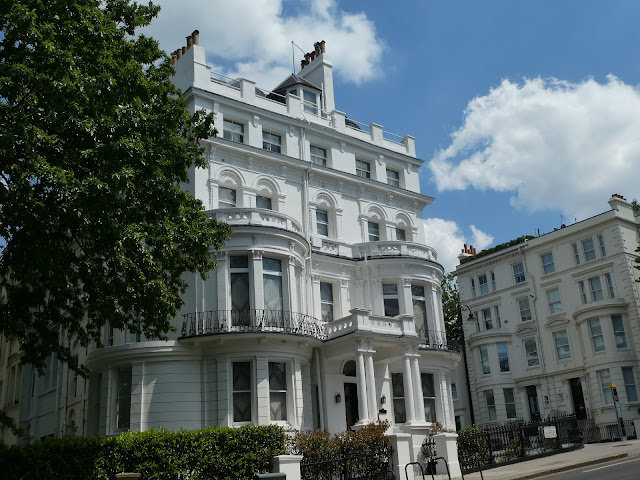







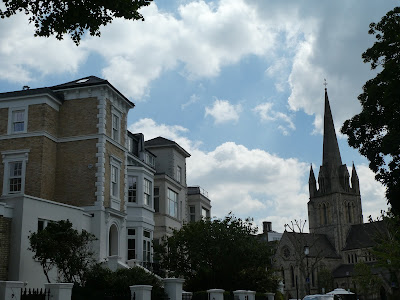




















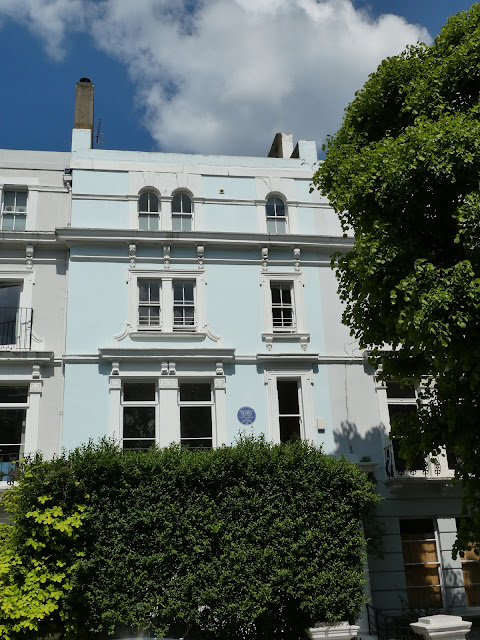











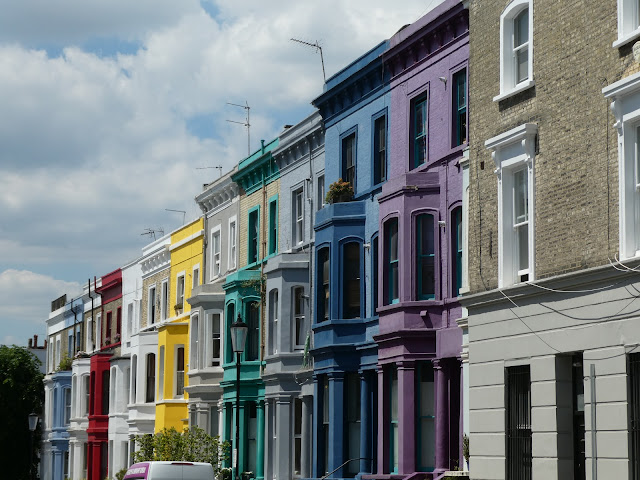









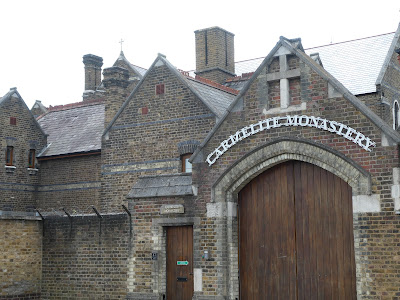


No comments:
Post a Comment